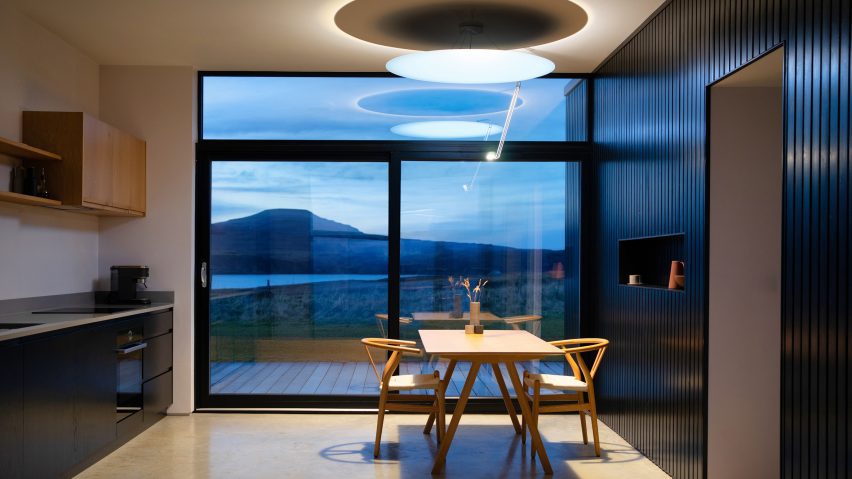
Sunshine-like Sunday Light presents "pleasant" alternative to SAD lamps
Driven by a desire for more mood-boosting daylight in the English winter, designers Nat Martin and Sean Hammett have invented an overhead light that promises to recreate the feeling of a sunny day.
The Sunday Light consists of a small but powerful LED suspended under a reflective panel. The panel is designed to diffuse light in a similar way to the Earth's atmosphere, dispersing it across a room.
Like a SAD lamp – the super-bright lights designed to fight seasonal affective disorder (SAD) – the Sunday Light promises to provide enough sun-like light to improve energy, mood and alertness.
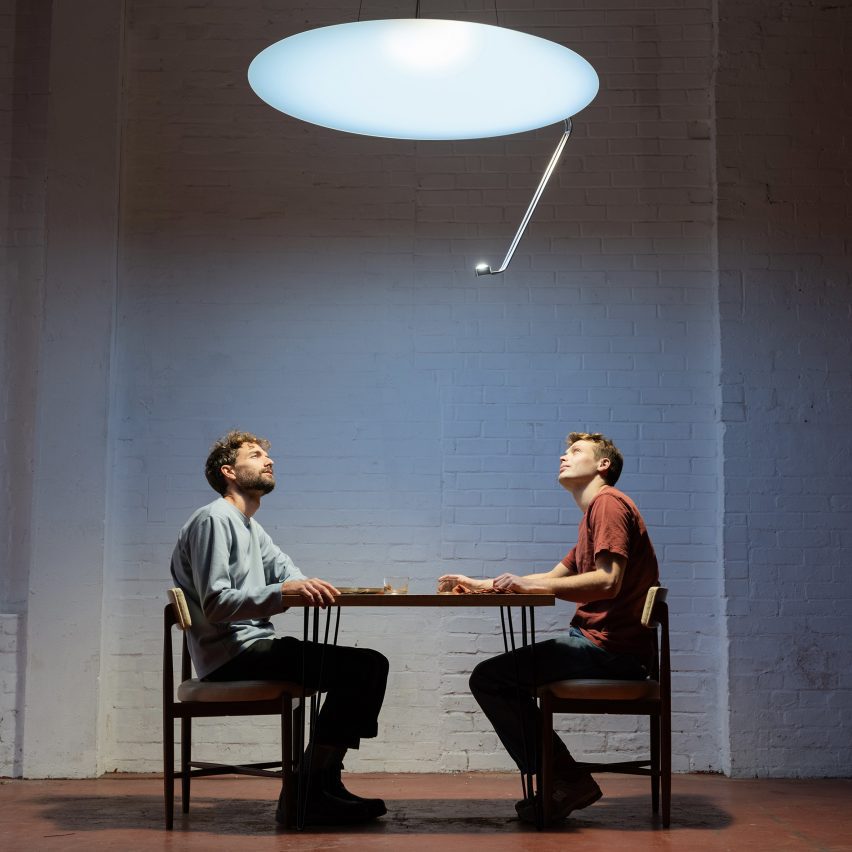
Unlike a SAD lamp, however, Martin and Hammett say they designed the light to be pleasant to sit under, applying some creative engineering solutions to create a natural-looking, diffused light without any harshness.
The pair began working on the light when Martin found himself turned away from the US border after trying to spend too much time in Los Angeles.
Forced to return to his home in England and rent a windowless office space in London in the middle of winter, he called on his sometime collaborator Hammett to help him come up with a solution to the sunlight scarcity.
"I love sunshine," Martin told Dezeen. "Everyone to some extent needs sunlight. Some people are more affected by it than others but bright sunlight makes everyone feel better."
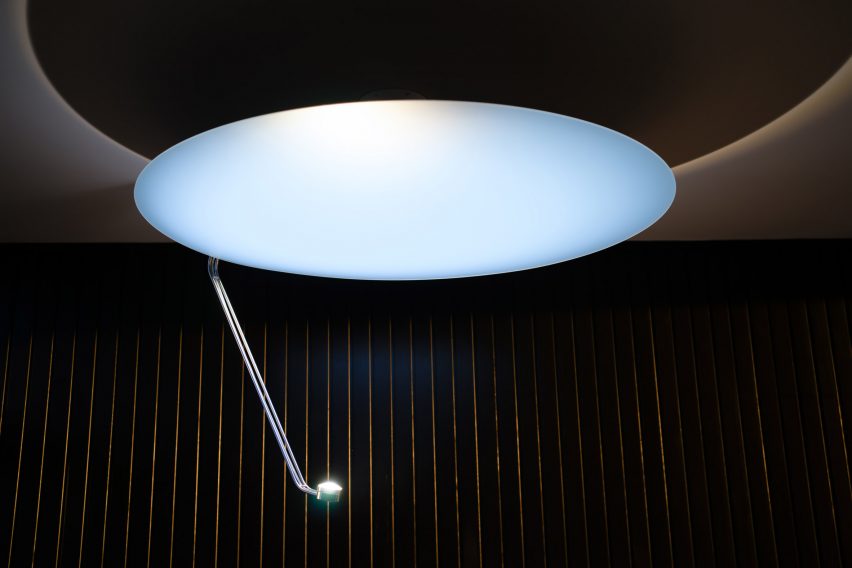
With this in mind, the pair didn't set out to address SAD sufferers and existing SAD lighting. Instead, they wanted to develop a light that could benefit everyone and recreate the feeling of a "beautiful sunny day".
Key to the design is what Martin describes as an "insanely bright" LED. At 10,000 lux, it delivers 300 times the light intensity of a typical home ceiling lamp.
This is where, according to Martin, he often has to ask people to give him the benefit of the doubt, as the idea of such a bright light can seem more repellent than attractive.
"The lighting world is very much centred around nice, dim, warm lights, which I think is what you want in the evening," he said. "And it's been done really well, but there's nothing for the daytime."
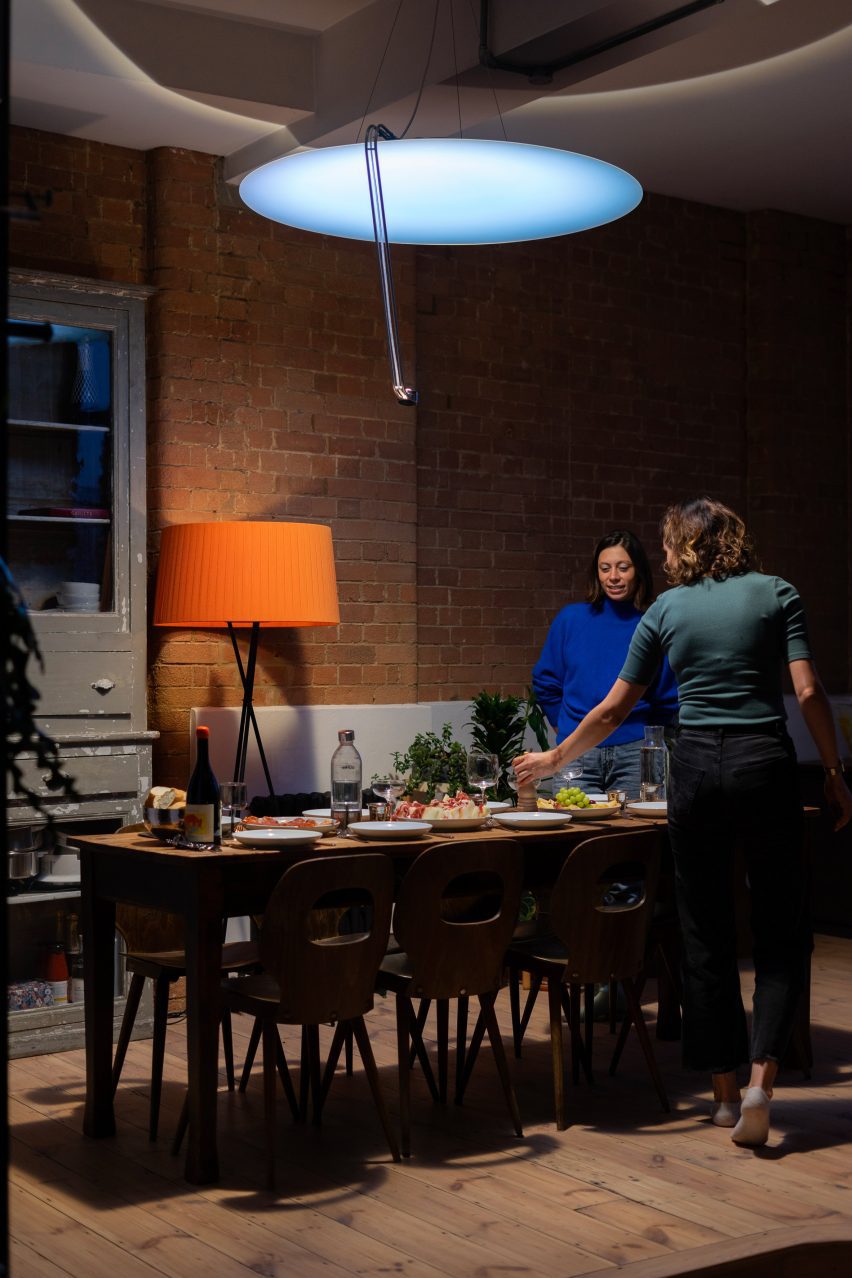
"The words bright and white light, both of those things have negative connotations but that's what sunshine is," he added.
"I think it's largely to do with the optics of how those lights work. The spectrum doesn't quite match the sun, so they have kind of a bluer tinge, which feels unpleasant and fluorescent-y. And it's partly to do with the surface area that the light emits from."
With the Sunday Light, Martin and Hammett have addressed both of these concerns.
First, the light has a high colour rendering index (CRI) value of 93, which means that even though it is cool in terms of colour temperature, it looks more natural and "pleasant", according to Martin.
Second, the light is indirect. The tiny, high-powered LED is contained within a metal arm and pointed up towards a diffusing reflector panel suspended from the ceiling.
The panel's finish – an acrylic paint containing titanium dioxide nanoparticles – further helps to scatter the light.
The effect is so much like what happens in the Earth's atmosphere that the panel appears sky blue when the light is on, with a white hotspot where the light hits it directly.
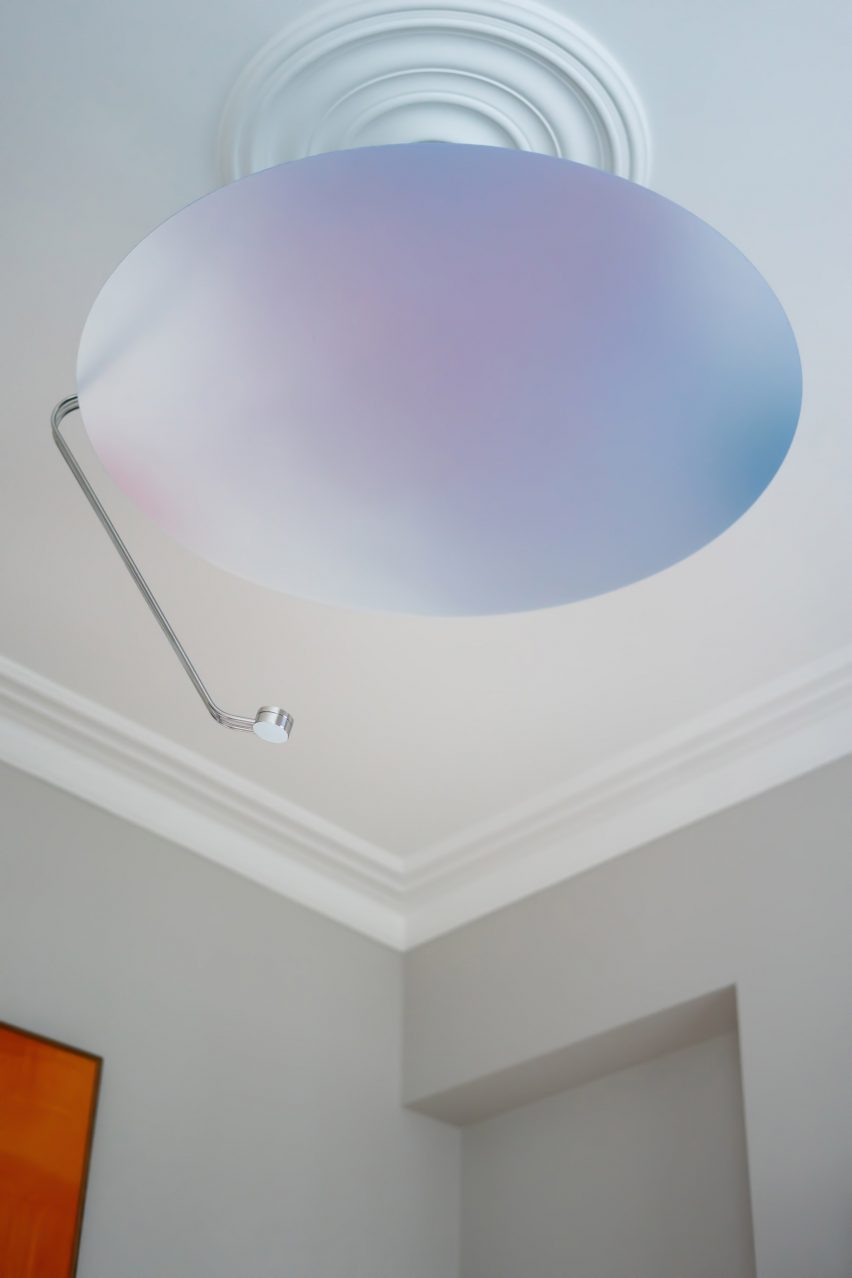
With the light off, the panel is actually a neutral, slightly pearlescent colour and visibly flat rather than domed.
This design also helps to conceal the necessary cooling system for the LED. Usually, a light this powerful would require a large heat sink that would look out of place in a home, office or hospitality setting.
Instead, Martin and Hammett came up with a smaller water cooling system, with water flowing down one pipe on the metal arm and up the other to reach a radiator above the reflector, which moves the heat into the ambient air.
"The design evolved from just trying to make something that fits in everyone's room," said Martin. "It fits in any house and it's not too heavy either at 25 kilograms."
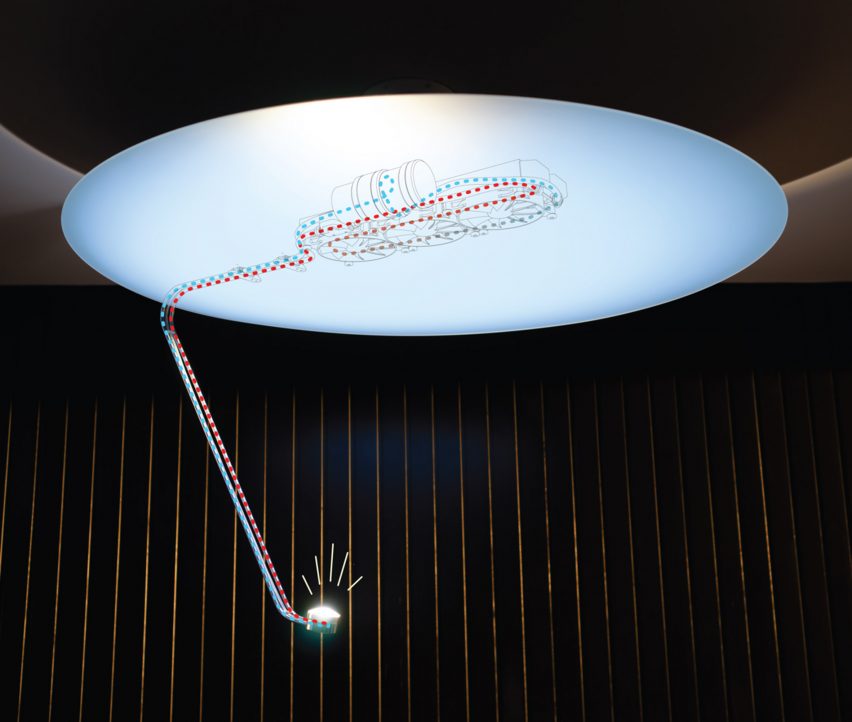
This distinguishes the Sunday Light from the likes of artificial skylights, such as those of Finnish brand Light Cognitive, which require architectural interventions.
Martin and Hammett have started their own company to sell the Sunday Light and will begin by targeting the UK and Scandinavian markets. To fight the bias against bright lights, they intend to display the product at showrooms so people can see its effect for themselves.
Both designers emerged from the Innovation Design Engineering masters course at the Royal College of Art and Imperial College London.
Martin's final-year project as part of the degree was an augmented reality controller ring, which he went on to develop under the name Litho before selling the technology.